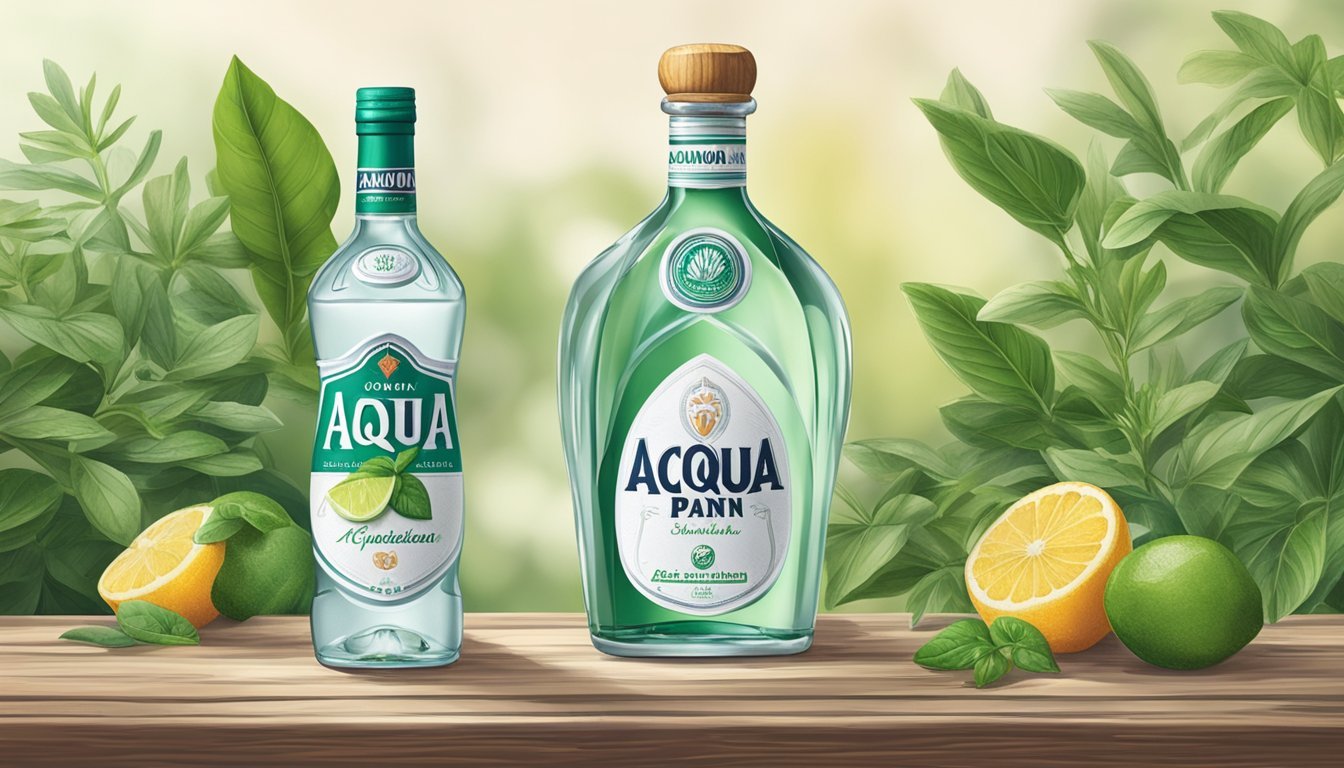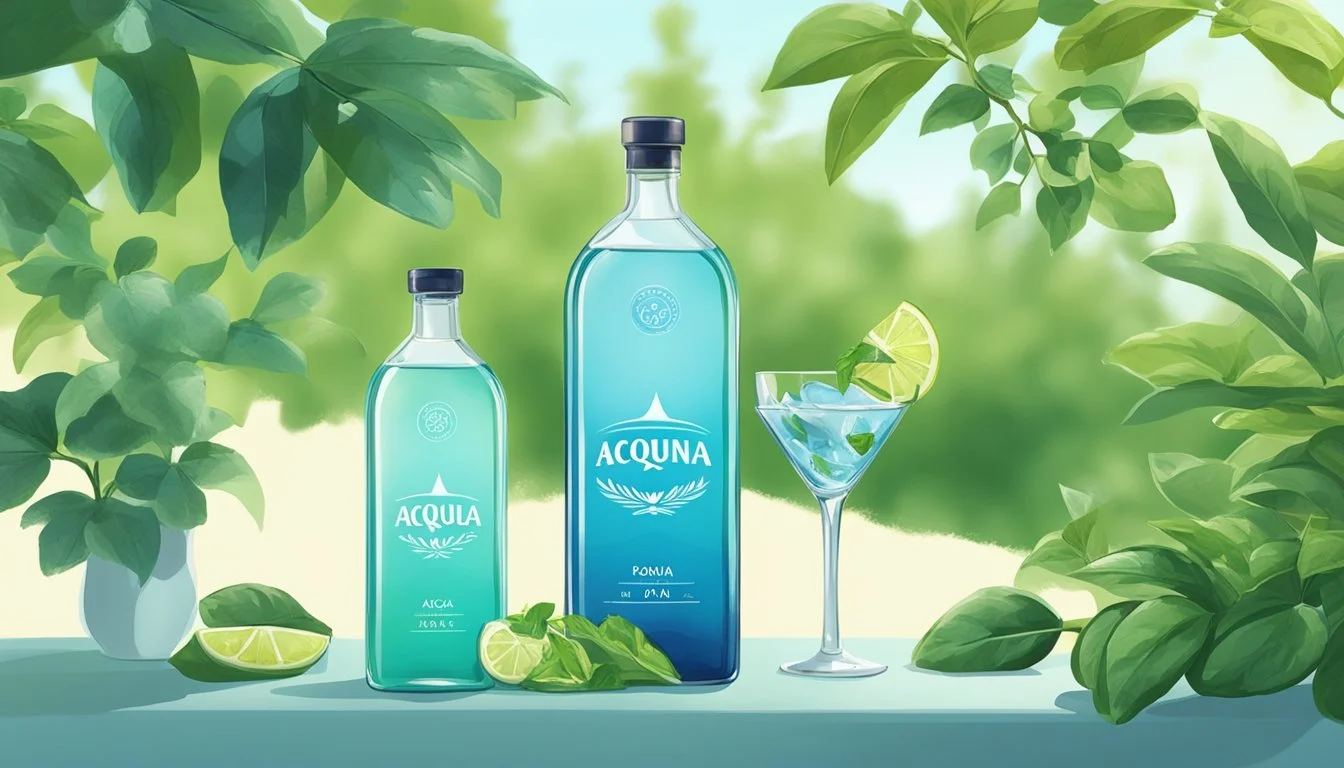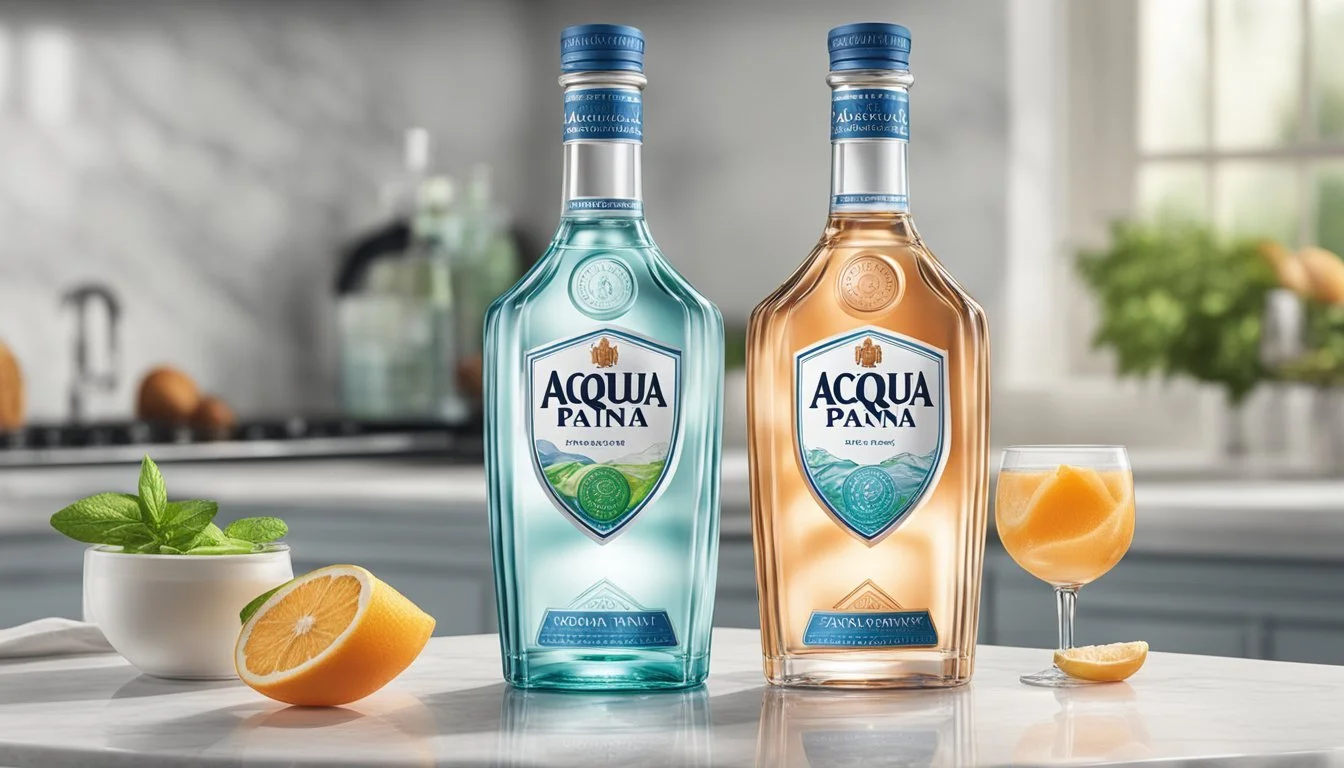Acqua Pana vs. Ramona
Comparing Quality and Taste
When it comes to selecting the best bottled water, discerning enthusiasts often find themselves debating between premium brands such as Acqua Panna and Ramona. Both waters have their unique selling points and hail from distinct regions, resulting in differences in taste, mineral content, and overall drinking experience. Acqua Panna, sourced from the Tuscan Apennines in Italy, boasts a naturally alkaline pH and is celebrated for its smooth, well-balanced flavor.
On the other hand, Ramona, while less internationally renowned, presents a refreshing option that appeals to those who prefer a crisp, clean taste devoid of strong mineral notes. Frequently chosen for its purity, Ramona offers a straightforward hydration experience without any aftertaste. When comparing the two, it ultimately comes down to personal preference: Acqua Panna's rich mineral profile and silky texture versus Ramona's simplicity and refreshing quality.
Understanding Bottled Water
Bottled water comes in various types, each offering distinct sources and potential health benefits. Knowing the differences can help consumers make informed choices that best suit their needs.
Source and Types of Bottled Water
Bottled water varies widely in its sources and types. Spring water is collected from natural springs and often boasts a taste reflective of its unique mineral composition. Mineral water contains minerals and trace elements from its source, which are retained during bottling. Natural spring water is also sourced from underground springs but may differ in mineral content compared to other types.
Bottled water can come from wells, springs, or be purified through processes like distillation and reverse osmosis. Purified water removes impurities and contaminants, ensuring consistent quality. Each variety offers a different balance of taste and mineral content, influencing consumers' preferences.
Health and Hydration Benefits
Staying hydrated is crucial for overall health, and bottled water plays an essential role in providing clean, readily available options.
Mineral water often contains essential minerals such as calcium and magnesium, beneficial for maintaining bone health and metabolic functions. Natural spring water and other bottled waters might have varying pH levels, influencing their potential health effects. For instance, a pH closer to 7.0 is considered neutral and ideal for drinking.
Enhanced waters with added electrolytes can aid in rehydration, especially after physical exertion. Some bottled waters feature naturally high pH, providing alkaline benefits that some believe help balance the body's acidity.
Understanding these differences enables consumers to select bottled water that aligns with their health goals and preferences.
Acqua Panna: An Overview
Acqua Panna, sourced from the hills of Tuscany, is a natural spring water known for its smooth taste and balanced mineral content. It offers a unique flavor profile and potential health benefits due to its mineral composition.
Origin and Source
Acqua Panna originates from Tuscany, Italy, drawing its water from a natural spring. The source is located in the picturesque Mugello region, a protected area known for its purity. The water is filtered through the earth’s natural processes, giving it a distinct quality and taste. This historical source has been providing clear and refreshing water since 1564, maintaining a legacy of high standards and natural excellence.
Taste Profile
Acqua Panna is celebrated for its smooth and velvety texture. Unlike some mineral waters, it lacks a strong or overwhelming taste, making it a popular choice among those who prefer subtler flavors. The water is often described as having a slightly sweet and well-rounded flavor. Its soft mouthfeel makes it suitable for pairing with fine dining experiences, enhancing the overall enjoyment of meals without overpowering the food's taste.
Health Benefits and Mineral Content
Acqua Panna has a balanced mineral content that can contribute to daily nutritional intake. It contains essential minerals like calcium and magnesium, which are beneficial for bone health and metabolic functions. The water’s pH level typically around 8.0, is considered alkaline, which some believe helps balance dietary pH. Its clean and smooth profile makes it not only a refreshing beverage but also a potential source of daily mineral supplementation.
Ramona: An Overview
Ramona water is recognized for its unique taste and quality, appealing to those who value both flavor and health. Its origins and nutritional profile contribute to its distinct position in the market.
Brand History and Water Source
Ramona is sourced from natural springs in the alpine regions. The brand emphasizes sustainability, ensuring their extraction methods preserve the natural environment. Established in the early 2000s, Ramona has grown rapidly due to its commitment to quality and eco-friendly practices.
The spring water is naturally filtered through layers of rock, which enhances its purity. This meticulous process results in a clean and refreshing product that retains essential minerals.
Flavor and Quality
Ramona water offers a crisp and invigorating taste, often described as having a subtle mineral presence. This quality is attributed to its natural filtration process and the rich mineral content of its source. Unlike some brands that may have an artificial or plastic aftertaste, Ramona maintains a pure and satisfying flavor.
Quality control is stringent, with regular testing to ensure consistency. This dedication to maintaining high standards supports its reputation among consumers who seek premium bottled water options.
Nutritional Information
The nutritional profile of Ramona water is one of its standout features. It is free from artificial additives, sweeteners, and preservatives. The pH level is typically neutral, hovering around 7.0, which is ideal for maintaining a balanced diet.
Ramona water contains small amounts of beneficial minerals such as calcium and magnesium. These contribute to its health benefits, making it not just a thirst quencher but also a source of essential nutrients for the body.
Comparative Analysis
Acqua Panna and Ramona bring distinct qualities to the bottled water market. Each brand boasts unique characteristics regarding taste, price, accessibility, and environmental impact.
Taste and Purity
Acqua Panna is sourced from the hills of Tuscany, Italy, known for its smooth, velvety texture and subtly sweet taste. Its pH level is typically around 8.0, indicating a balanced alkaline nature. This characteristic often appeals to those seeking a milder mineral flavor.
Ramona, on the other hand, sources its water from natural springs, often emphasizing a crisp and clean taste with a neutral pH level close to 7.0. This neutral pH makes it appealing to a broader audience. Both brands highlight their commitment to purity and natural filtration processes.
Price Point and Accessibility
Acqua Panna positions itself as a premium brand, often found in upscale restaurants and high-end grocery stores. Its price reflects its premium status, making it less accessible to budget-conscious consumers.
Ramona offers a more varied pricing strategy, catering to a wider range of customers. Found in many supermarkets and convenience stores, its affordability increases its accessibility. This variety in pricing makes Ramona a suitable option for everyday consumption.
Packaging and Environmental Impact
Acqua Panna uses both glass and plastic bottles, with the glass bottles being more prominent in premium markets. The use of glass is a nod to sustainability, as glass is more eco-friendly and recyclable than plastic.
Ramona emphasizes sustainability with a focus on using recycled materials for their plastic bottles. This commitment to eco-friendly practices is appealing to environmentally conscious consumers. Both brands strive for sustainability, but their approaches differ, with Acqua Panna leaning towards glass and Ramona focusing on recycled plastics.
Consumer Considerations
When choosing between Acqua Panna and Ramona, consumers must evaluate various factors, such as health benefits, convenience, and brand values. Each brand offers distinct features that cater to different lifestyles and preferences.
Health and Dietary Impacts
Acqua Panna and Ramona offer different mineral profiles that can impact hydration and overall health. Acqua Panna is known for its balanced composition with low sodium and a smooth taste, making it suitable for regular consumption.
Ramona, on the other hand, might have higher mineral content, which can benefit certain diets but may not be suitable for those monitoring their sodium intake. It is vital for consumers to check the label for exact mineral details like potassium and calcium.
Convenience and Lifestyle
For convenience, Acqua Panna is often favored due to its availability in various sizes from small bottles to larger multi-packs. This flexibility makes it easy to carry whether for a short trip or daily gym sessions.
Ramona might prioritize eco-friendly packaging, which appeals to environmentally conscious consumers. However, it might be less accessible in some regions, affecting its convenience. Storage and serving temperature recommendations also play a role; Acqua Panna is best served chilled but not overly cold, making it simple to incorporate into daily routines.
Brand Values and Practices
Consumers today value transparency and sustainable practices. Acqua Panna focuses on preserving the environment around its Tuscan springs and highlights its commitment to quality and purity.
Ramona may emphasize local sourcing and minimal processing, appealing to consumers interested in supporting regional products. Each brand's approach to sustainability and ethical practices can significantly influence purchasing decisions.
Overall, each brand's alignment with consumer values—whether it be environmental sustainability, support for local communities, or commitment to health—plays a crucial role in determining which water they might prefer.
Regulatory and Safety Standards
When comparing Acqua Panna and Ramona bottled water, it’s crucial to examine their adherence to regulatory and safety standards. This involves understanding the rigorous water quality testing they undergo and the certifications and compliance they maintain.
Water Quality and Testing
Acqua Panna undergoes thorough water quality testing to ensure safety and purity. It is sourced from Tuscany's pristine springs, ensuring a naturally balanced pH level around 8.0. Regular testing checks for contaminants such as harmful chemicals, bacteria, and heavy metals. These tests are conducted in alignment with the stringent guidelines set by the Environmental Protection Agency (EPA).
Ramona also adheres to robust testing protocols for water quality. Their source is continually monitored to ensure the absence of pollutants and other dangerous substances. The pH level is maintained close to neutral, typically around 7.0, which is considered ideal for taste and health. Both brands prioritize safety, making sure their bottled water meets or exceeds federal and international standards.
Certifications and Compliance
Acqua Panna holds multiple certifications that attest to its high standards of quality and safety. It is FDA-approved and often achieves certification from independent third-party organizations that validate its purity and safety. Compliance with international standards ensures that their water remains free from contaminants. Additionally, Acqua Panna’s manufacturing process follows Good Manufacturing Practices (GMP), ensuring product integrity.
Ramona is similarly certified, meeting or surpassing standards set by both the FDA and EPA. Their bottling facilities operate under strict regulations to ensure the water remains uncontaminated during the bottling process. They also seek third-party verification to maintain transparency and trust with consumers. This adherence to regulatory standards underscores their commitment to providing safe drinking water.
The Verdict
When determining which bottled water ranks higher between Acqua Panna and Ramona, it is crucial to consider aspects such as overall quality, drinking experience, and consumer preferences. Each water brand offers unique characteristics that appeal to different tastes and needs.
Overall Quality and Experience
Acqua Panna is known for its smooth, crisp flavor derived from natural springs in Tuscany. The water maintains a neutral pH balance around 8.0, providing a slightly alkaline quality that some consumers view as beneficial. It is free from any notable aftertaste, making it a favored choice for those who prefer a clean drinking experience.
Ramona, on the other hand, might not have the same recognition as Acqua Panna. However, it holds its ground with a refreshing taste and neutral pH balance. The origin of its water source and the overall mineral content are important factors contributing to its appeal. Users often appreciate the consistency and lack of any chemical or plastic taste.
Consumer Recommendations
Acqua Panna is often recommended for those seeking a premium drinking experience. Its reputation for high quality and clean taste makes it a popular choice among health-conscious consumers and fine dining establishments.
Ramona, though less heralded, is suggested for everyday hydration needs. It offers a reliable and pleasant taste without breaking the bank. Consumers on a budget or those looking for a dependable daily water option might find Ramona to be a suitable choice.
When weighing Acqua Panna against Ramona, factors like taste preference, price, and brand reputation play critical roles. Each water brand satisfies distinct consumer needs, making the ideal selection a matter of personal preference.








